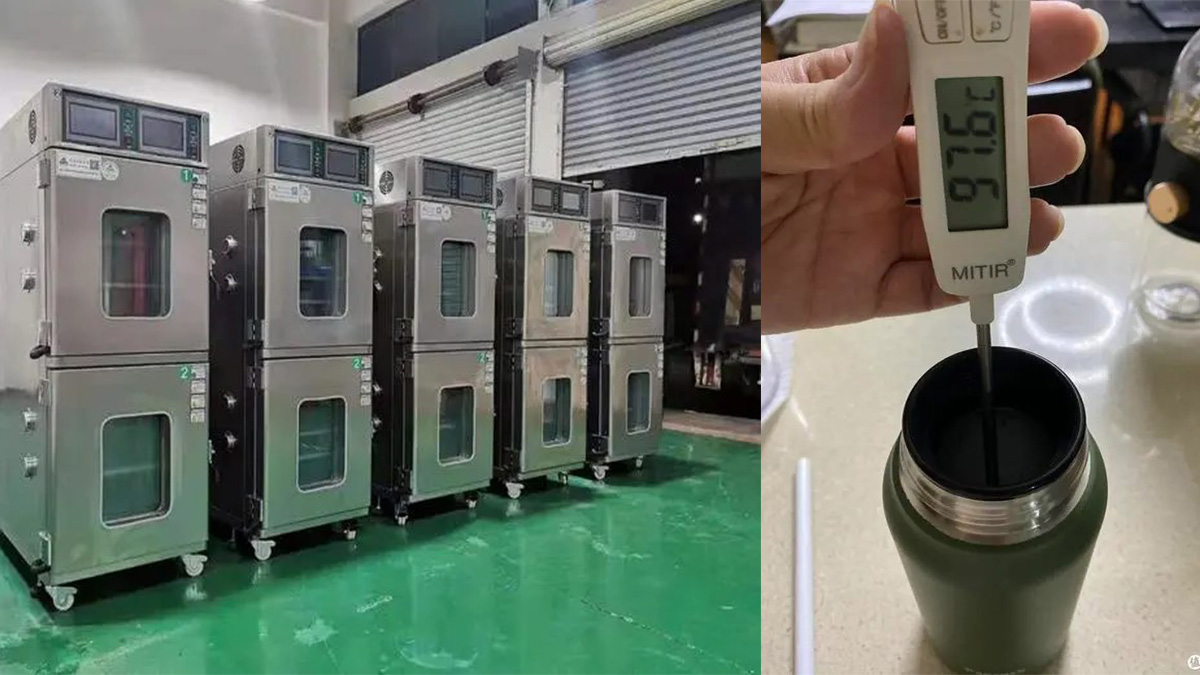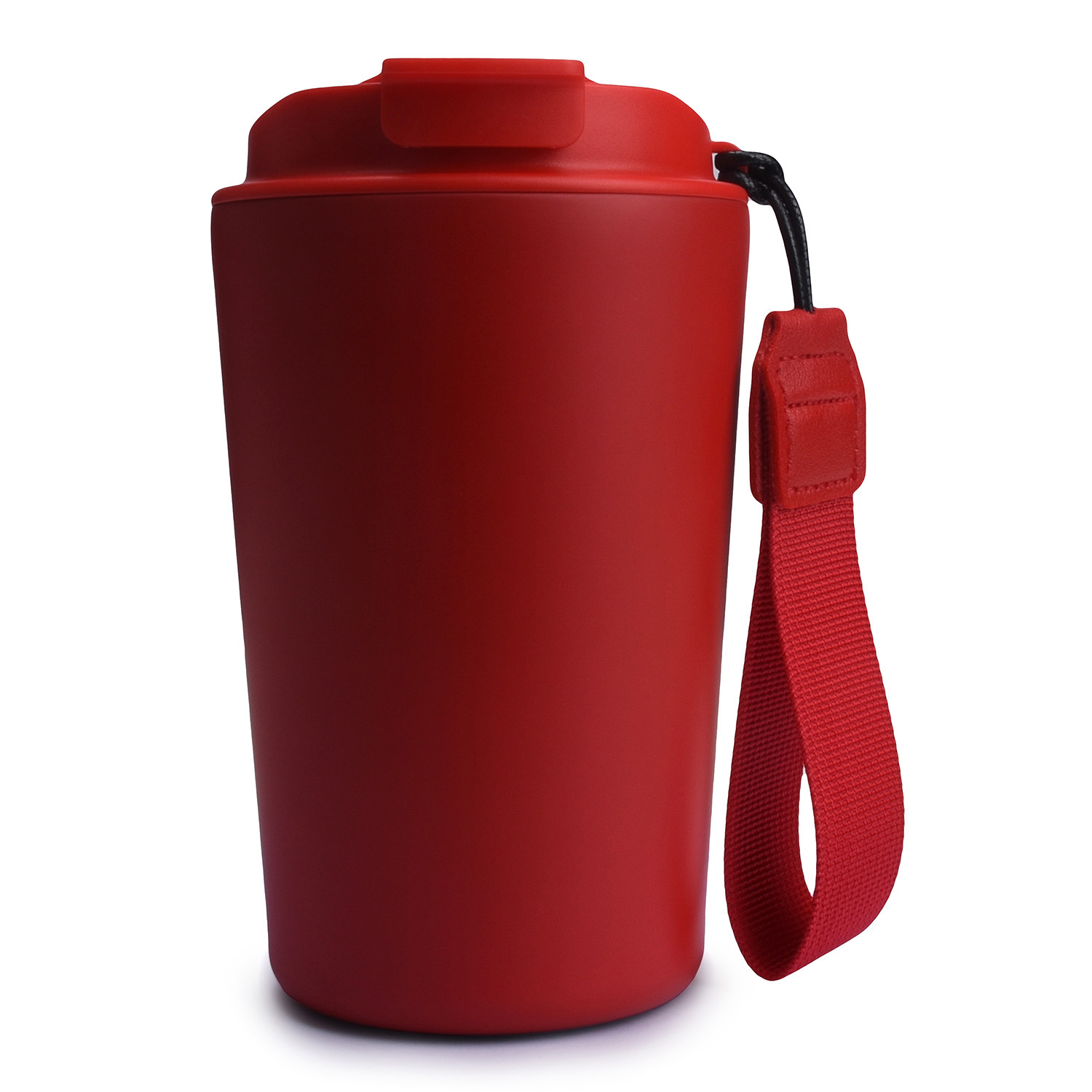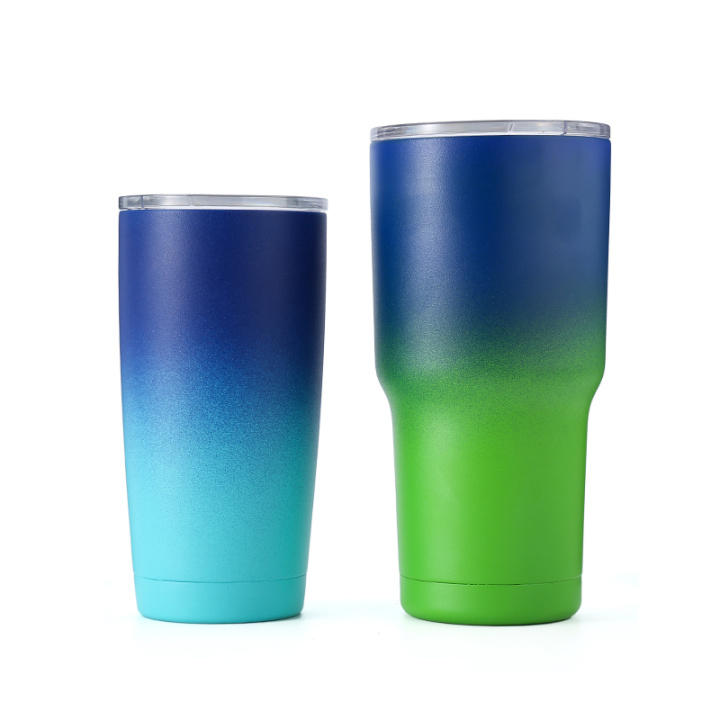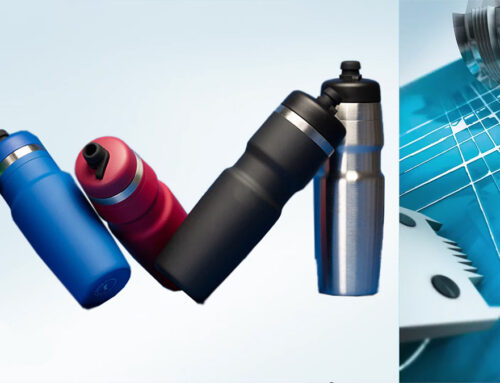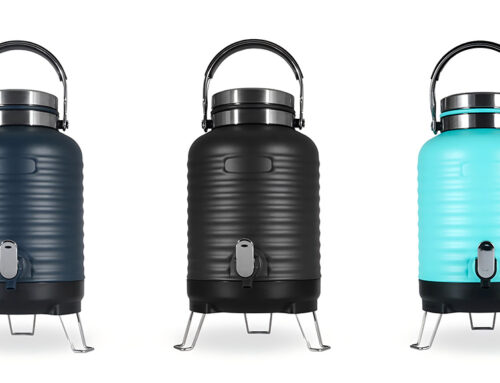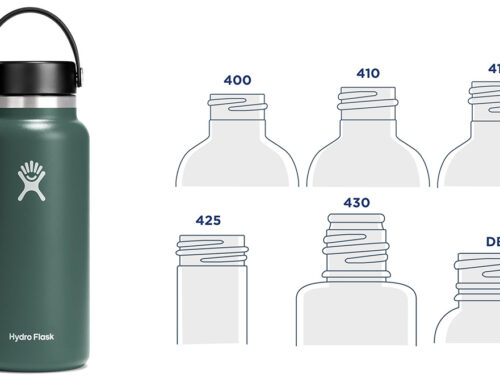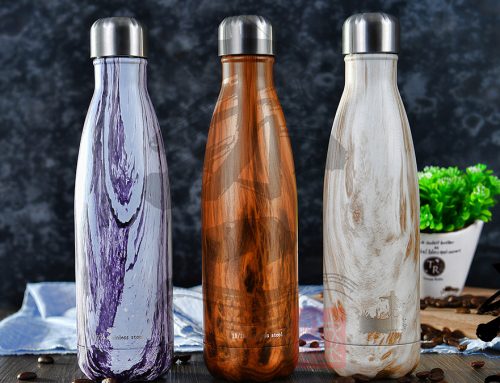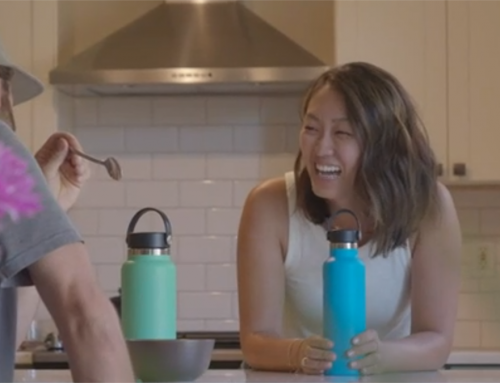The high-low temperature testing procedure is a critical assessment method designed to evaluate the resilience of insulated stainless steel drinkware such as water wholesale water bottles, bulk stainless steel tumblers, thermos coffee cups, vacuum flasks, custom can coolers, thermal seal vessels, food containers, dog bowls, across a range of storage, transportation and usage scenarios in varying climatic conditions. This test quantifies the insulated stainless steel water bottle’s ability to withstand extreme temperatures by exposing it to both high and low thermal conditions for specified durations. The intensity of the test is calibrated based on the specific temperature thresholds and the length of exposure time to these conditions. As a premier manufacturer specializing in custom stainless steel drinkware, KingStar adheres to the strictest testing protocols to ensure our insulated water bottles meet the highest standards of durability and performance under adverse temperature environments.
Temperature Range: -40°C to 150°C
Humidity Range: 20% to 98% RH
1. What is high-low temperature test for stainless steel drinkware?
High-low temperature test, encompassing both high-temperature and low-temperature evaluations, is a critical procedure aimed at assessing the performance impact on stainless steel water bottles under various thermal conditions. This testing is essential for products such as stainless steel water bottles, insulated metal tumblers, thermos cups, jugs, food containers and dog bowls, particularly during storage and operational phases. The primary goal is to determine how these stainless steel containers withstand and function in environments with extreme temperatures, ensuring their reliability and durability in everyday use.
2. High-low temperature test methods comparison
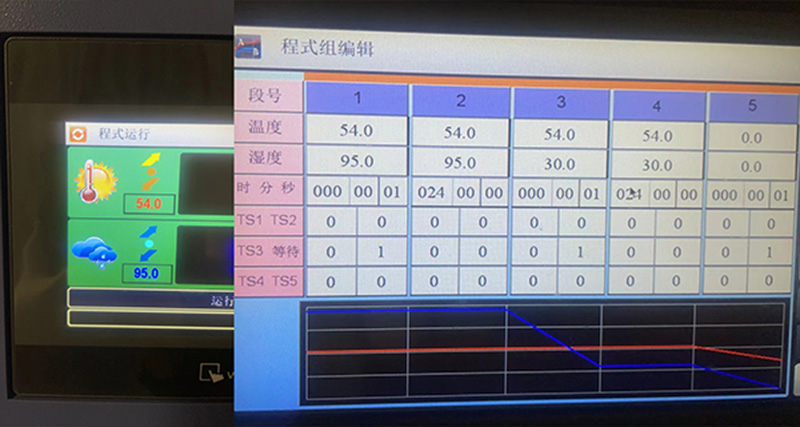
Non-Heat-Dissipating vs. Heat-Dissipating Stainless Steel Water Bottle Samples
Tests conducted in natural air conditions categorize stainless steel water bottles based on their surface temperature stability: water bottles whose hottest surface points remain over 5°C above the surrounding atmospheric temperature after reaching a stable temperature are considered heat-dissipating test samples. Conversely, those equal to or less than 5°C above are non-heat-dissipating test samples. All non-operational storage and transportation tests fall under the non-heat-dissipating category. During operational state test, samples of stainless steel water bottles with a temperature rise less than 5°C after stabilization are also classified as non-heat-dissipating. For instance, an electric fan undergoing type test is considered a heat-dissipating test if the easily touched outer surface’s temperature rise does not exceed 20°C.
Sudden Temperature Change vs. Gradual Temperature Change Tests
A sudden temperature change test involves placing drinkware like water bottles, tumblers, cups, pints, jugs and vacuum flasks into a test chamber immediately after it reaches the specified temperature. In contrast, a gradual temperature change test starts with the stainless steel drinkware in a room-temperature chamber, gradually adjusting the chamber’s temperature to the required levels. Generally, sudden temperature change tests are preferred to save time when it’s known that such changes won’t adversely affect the stainless steel drinkware sample. Otherwise, gradual temperature change tests are used.
To ensure product quality, KingStar conducts both sudden and gradual temperature change tests on our stainless steel drinkware.
Forced vs. Non-Forced Air Circulation Tests
During non-heat-dissipating tests, employing forced air circulation can enhance thermal exchange efficiency, with higher air circulation speeds leading to higher efficiency. It is recommended to use an air circulation speed of ≥2m/s for these forced tests. However, for heat-dissipating tests, non-forced air circulation tests are preferable. Forced air circulation tests should only be used if non-forced air circulation fails to meet the test requirements.
3. Equipment and parameters for high-low temperature test
Test Equipment
- High-temperature test: These tests are typically conducted by placing the stainless steel drinkware inside a constant temperature chamber or room. The medium’s temperature is measured at different locations using thermometers, and the arithmetic mean of these measurements is taken. However, it is crucial that the temperature within the chamber is as uniform as possible. stainless steel drinkwares are heated through the flow of hot air, ensuring that test samples are not placed near the heat source to minimize the effects of radiation. Furthermore, the wall temperature of the test chamber should not exceed the ambient temperature by more than 3% to reduce radiation impact.
- Low-temperature test: These tests are usually carried out in a low-temperature chamber or room, where the temperature is typically achieved through artificial refrigeration methods. Within the effective working space of the low-temperature chamber, forced air circulation is utilized to maintain the uniformity of the low-temperature conditions.
As a leading manufacturer of wholesale custom water bottles, KingStar was the first to use this testing method, ensuring that the test environment closely replicates the actual conditions that the stainless steel drinkware will face, thus providing reliable and accurate data on their performance under extreme temperatures.
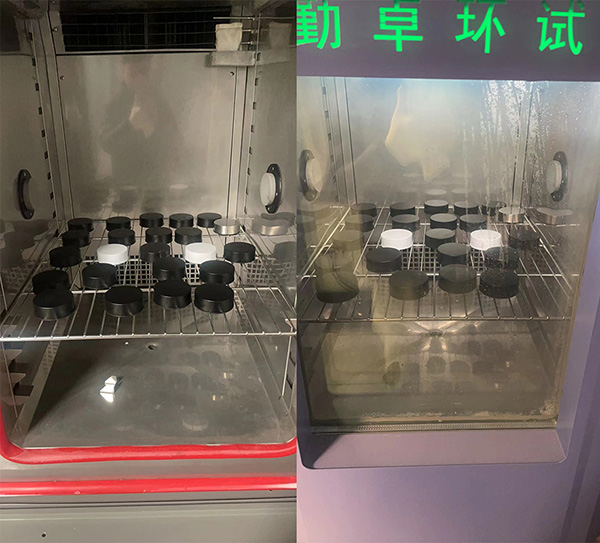
Test parameters and procedures
| Test Type | Test Procedure | Judgment Criteria |
| Thermal Shock – Endurance Test | Step 1: Place the stainless steel water bottle in a -10°C (14°F) low-temperature environment for 15 minutes to freeze.
Step 2: Transfer to an oven set at a warm environment temperature of 70°C (158°F) for 15 minutes. Step 3: Repeat for 10 cycles. Step 4: Place the sample water bottle at room temperature between 20°C (68°F) and 25°C (77°F) for 30 minutes, then conduct one round of airtightness test. |
The stainless steel water bottle’s insulation performance must remain normal; components such as lids, straws, and handles should function properly; there should be no apparent changes in the stainless steel water bottle’s appearance. |
| Extreme Low Temperature & Humidity Test | Step 1: 24 hours at 54°C with 95% relative humidity.
Step 2: 24 hours at 54°C with 30% relative humidity. Step 3: 24 hours at 0°C. |
The stainless steel water bottle’s insulation performance must remain normal; components such as lids, straws, and handles should function properly; there should be no apparent changes in the sample water bottle’s appearance. |
KingStar adopts these procedures outline a rigorous test framework to ensure that our stainless steel drinkware can withstand extreme conditions without compromising their functionality, durability, or appearance. Our tests simulate real-life scenarios that our stainless steel drinkware might encounter, providing our consumers with confidence in our products’ performance and quality. Click and read more: Stainless Steel Vacuum Thermos Bottle Testing: World-famous Third-party Testing Companies
4. What are essential requirements for water bottles and tumblers after high-low temperature test?
After undergoing high-low temperature tests, stainless steel water bottles and tumblers should meet the following fundamental requirements to be deemed compliant with high and low-temperature standards. These criteria generally align with the specifications outlined in the stainless steel drinkware’s technical conditions or agreements:
- Surface condition: The surface of the stainless steel water bottle should be free from damage, deformation or any defects. For water bottles treated with spray painting, powder coating, sublimation printing or 3D printing, there should be no instances of coating peeling, blistering or discoloration.
- Plastic lids: The surface of plastic lids should not exhibit cracks, blistering or deformation.
- Silicone seals: Silicone material used in sealing rings should show no signs of aging, adhesion, softening or splitting.
- Welding integrity: Welded areas, such as the steel bottom of the water bottle, should have no cracks.
- Insulation performance and structural functionality: The insulation performance data and the structural function should meet the test requirements. There should be no defects that could hinder the stainless teel water bottle’s normal operation.
These requirements ensure that our products maintain integrity, functionality, and aesthetic appeal even after exposure to extreme temperature conditions. Meeting these standards is crucial for maintaining our consumer trust and ensuring the longevity and reliability of the product in everyday use.
If you want more information on vacuum insulated drinkware testing or developing custom design insulated vessel container, please feel free to leave online message or send email to sales@waterbottle.tech, you will get reply within 24 hours.

